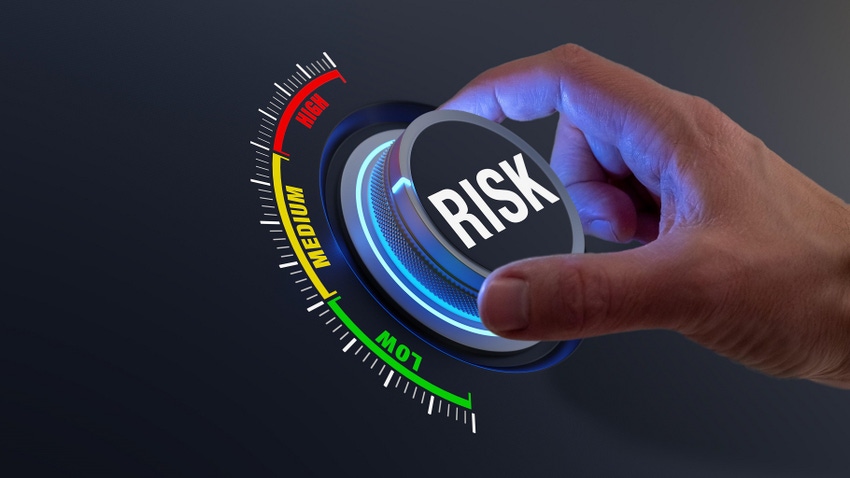Addressing Risk Caused by Innovation
By embracing a proactive approach to cyber-risk management, companies can better detect, prevent, and mitigate cyber threats while integrating the latest state-of-the-art technology.

COMMENTARY
In today's fast-paced world, most businesses are racing to incorporate the latest technology and innovations to meet the demands of customers craving convenience and accessibility. After all, who doesn't love banking from their phone 24/7 or shopping from their couch?
To meet these demands, companies rush to implement new technology as quickly as it emerges, but while enhancing business operations is undeniably lucrative, it comes with a price: Risk. As we embrace all the luxuries of innovation, cybercriminals are poised to exploit the vulnerabilities that these changes expose. Industries like healthcare and financial services are especially attractive targets, due to the valuable data and assets they are entrusted to protect, but cybercrime poses a threat to all. As a result, taking a proactive approach to managing cyber-risk, which involves pre-emptive and continuous action to assess and address risks caused by innovation, is being emphasized as a strategic necessity.
Traditional cybersecurity practices are like playing a never-ending game of whack-a-mole, because just as soon as one risk or vulnerability is addressed, another one pops up, presenting a new challenge. This can be frustrating, time-consuming, and ineffective in the rapidly evolving threat landscape. This ever-changing complexity further highlights the dynamic landscape of cybersecurity. We know that risk is an inherent part of all change — whether opening a new physical location, merging with another company, or implementing an online bill pay system, any modifications open the door to new vulnerabilities. Sounds bleak, right? Yes, the warnings about risk are ominous, but there is a way for businesses to participate in innovation successfully and prepare for the inevitable risk … and it's all about embracing a new mindset.
In the latest annual Global CEO Survey by PwC, CEOs in the financial sector and capital markets reported a significant concern over the threat to profitability due to changing consumer demands and behaviors. As a way to tackle this possible problem, CEOs invest significantly in technology such as AI and cloud solutions by automating processes and systems to improve the customer experience — a proactive measure to mitigate a possible threat to their bottom line.
However, a lack of attention to cybersecurity during the implementation of these technology solutions poses a significant risk to organizations where trust is critical. Cybersecurity is often an afterthought as companies integrate new processes and, especially, new technologies. This mindset leaves your business and your customers vulnerable to threat actors, so it’s time to substantially shift how change, risk, and strategy are perceived.
An Action Plan
Integrating cybersecurity defenses in tandem with new technology — not as a reactive action because a threat suddenly popped up — is the most effective route. Put the mallet down and approach cyber-risk with real-time data so your company stays ahead of emerging threats, instead of standing poised and hoping your reaction is well-timed. The development of technologies should be designed and planned with possible exposure to risk at the forefront. This proactive method simultaneously addresses both challenges, improves their performance through technology, and bolsters security measures. To implement this approach, a cyber framework that integrates with new projects at every stage can be implemented, even if it means extending the development timeline. In that way, businesses can address both challenges in a complementary manner, enhancing performance through technology while becoming more cyber secure.
This approach not only protects against cyber threats but also improves customer experience, since customers often demand seamless, convenient, and secure services. By integrating cybersecurity in tandem with technology implementation, companies across all industries can improve their customer experience while retaining trust.
It’s important for businesses to work with a trusted partner in cyber-risk management to evaluate new technology for risk as it is created, rather than reacting to the risk that the technology triggered. This approach allows your company to identify potential vulnerabilities in new technology early on and implement appropriate security measures to mitigate the risks rather than addressing them after your business and your customers are already at risk. This assessment can identify potential vulnerabilities in the technology and determine the level of risk associated with each vulnerability. Based on this assessment, a plan is developed to mitigate the risks and ensure the security of systems and data. The information can be leveraged to create and implement policies and procedures for managing and monitoring the new technology to ensure ongoing security.
These recommendations serve as a reminder that being proactive doesn't just involve addressing risk due to a new product or service offering. It also means being proactive in defining, adopting, and measuring the effectiveness of risk assessments, as well as implementing the best practices that can mitigate these risks before they occur.
By embracing a proactive approach to cyber-risk management as a whole, companies across all industries can better detect, prevent, and mitigate cyber threats while integrating the latest state-of-the-art technology. And the best part? You can put that mallet away, because your company will detect threats before they even have a chance to pop up.
About the Author(s)
You May Also Like
Safeguarding Political Campaigns: Defending Against Mass Phishing Attacks
May 16, 2024Why Effective Asset Management is Critical to Enterprise Cybersecurity
May 21, 2024Finding Your Way on the Path to Zero Trust
May 22, 2024Extending Access Management: Securing Access for all Identities, Devices, and Applications
June 4, 2024Assessing Software Supply Chain Risk
June 6, 2024
Black Hat USA - August 3-8 - Learn More
August 3, 2024Cybersecurity's Hottest New Technologies: What You Need To Know
March 21, 2024




